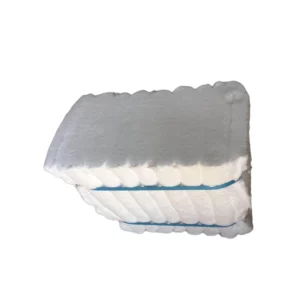Ceramic Fiber Modules
Showing the single result
Laurel Group, As Leading Supplier Of Insulation Products
Laurel Group is a leading supplier of insulation materials. The products comprise of fire clay bricks, high alumina bricks, insulating bricks, ceramic fiber modules, ceramic fiber block, unshaped refractory materials, rock wool, and glass wool products.
Committed to delivering exceptional quality products, services, and technical support to the global market. To satisfy the needs of foreign customers in the local market, we supply relevant certificates. At the same time, we do so. Certificates like ISO9001:2008, ECM Certification, and ISET are included.
Key 6 Points For Ceramic Fiber Modules Supplied By Laurel Group
Ceramic fiber modules are pre-shaped insulation materials made of ceramic fibers. There are 6 key points regarding ceramic fiber modules:
The fibers used in their composition are either alkaline earth silicate or alumina ceramic and have the ability to endure temperatures as high as 1600-2000°C.
Ceramic fiber modules are lightweight, flexible and Textiley. Compared to hard refractory ceramics, they are easier to handle and install.
Their effective thermal insulation is due to their low thermal conductivity.
Ceramic fiber modules can be reused once they have cooled down. High-temperature ceramic fibers and binders can be used to patch up minor damage.
Ceramic fiber modules exhibit chemical stability, are non-combustible, and can withstand high temperatures, flames, moisture and corrosion without being damaged.
Ceramic fiber modules are available in various forms. Such as boards, papers, mats, blankets, sleeves, etc. They can offer insulation for both planar and irregularly shaped parts.
Types of Ceramic Fiber Modules
Ceramic fiber blanket or cloth – These are flexible boards or mats made of interfelted ceramic fibers. They are used for high temperature insulation and gasketing.
Ceramic fiber board – These are rigid boards made by compressing ceramic fibers along with a binder. They have higher strength and can be cut and shaped. They are used for insulation in high heat components like combustors, turbines, etc.
Ceramic fiber paper – These are thin sheets made of compressed ceramic fibers. They have higher density than blankets and are used for applications requiring more strength and durability. They are often used as insulation in furnaces, kilns, ovens, etc.
Aluminium silicate ceramic fiber modules – Made of aluminum silicate fibers, it can withstand very high temperatures up to 2000°C. But it is more expensive and brittle compared to standard alkaline earth silicate ceramic fibers.
Ceramic fiber mat – These are flexible mats made of loosely bound ceramic fibers. They have lower density and thickness compared to blankets and papers. They are used for insulation where flexibility and draping over contours is important.
Main 4 Environmental Impact Of Ceramic Fiber Modules
Alkaline earth silicate or alumina fiber ceramic fiber modules are regarded as eco-friendly insulation materials due to the following reasons:
Ceramic fibers exhibit chemical stability and are not reactive. Neither toxic fumes nor pollutants are emitted during high-temperature use or handling/installation. They are nonreactive and do not present any chemical danger.
Ceramic fibers are non-flammable and do not emit smoke. They possess resistance against flames and high heat.
Indoor air is not polluted by the degradation or off-gassing of ceramic fiber modules. No fibers or chemicals leach out into the surrounding air once installed as they maintain their integrity.
Even though fiber wool modules are intended for use in high temperatures, a considerable amount of them can be recycled by being melted and re-spun into new fibers.

